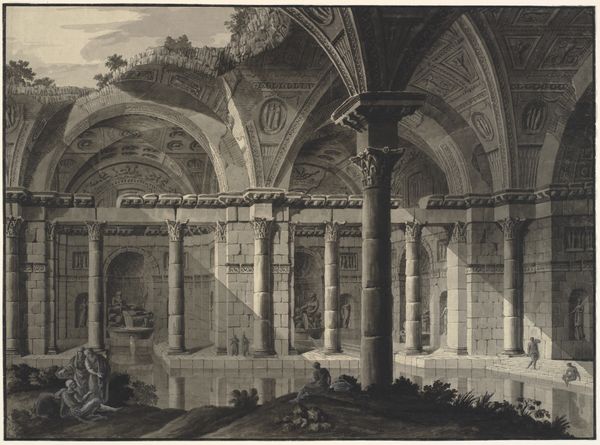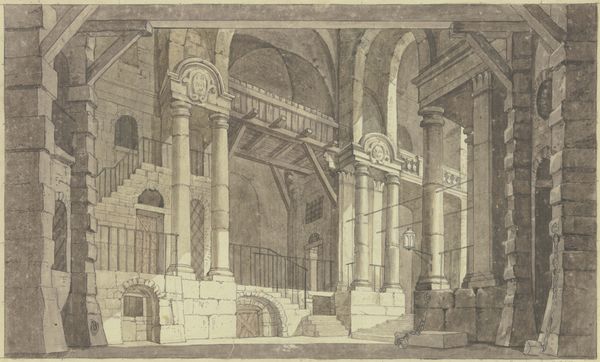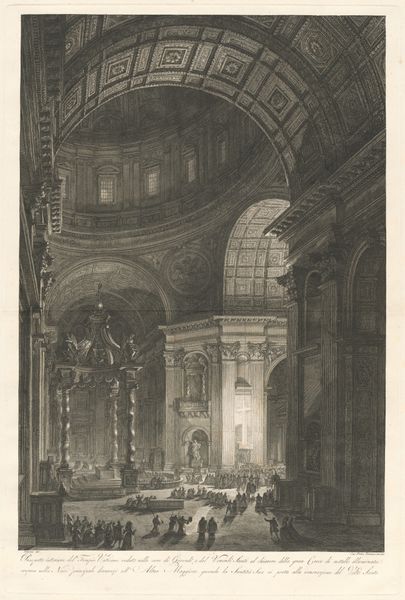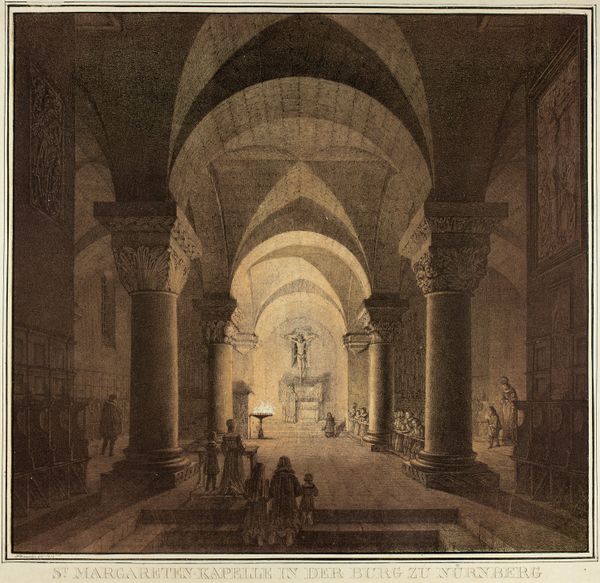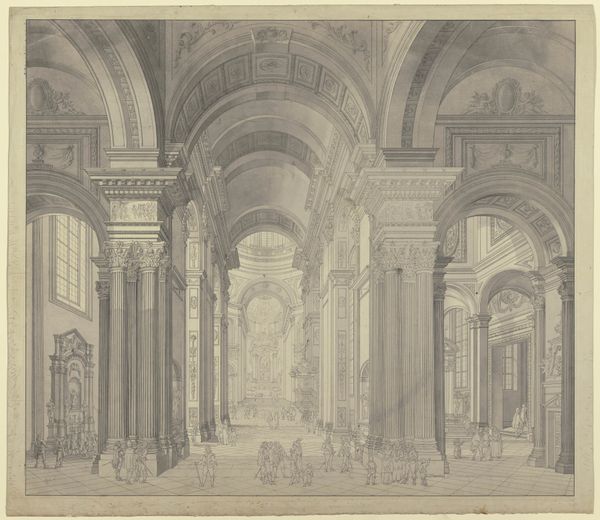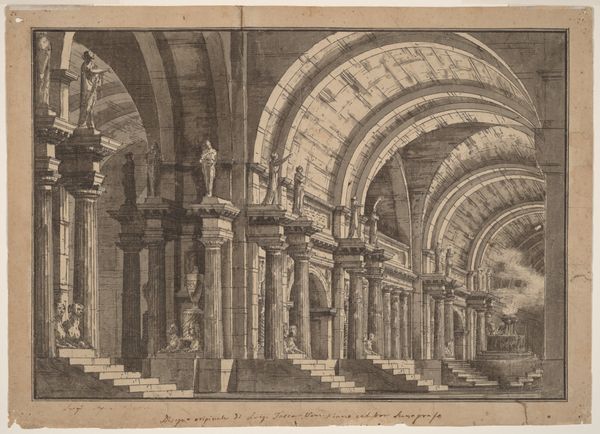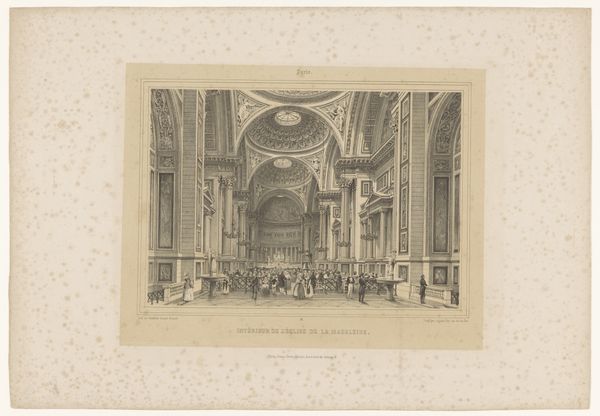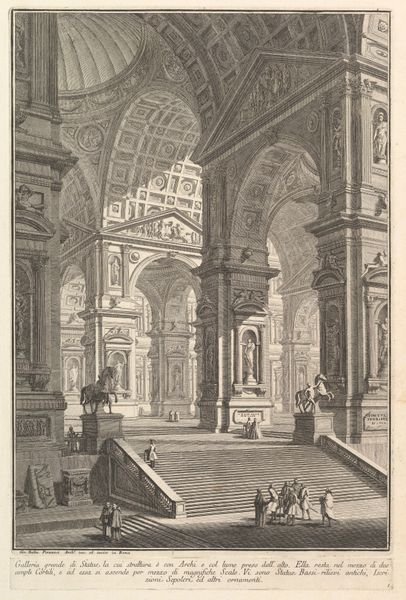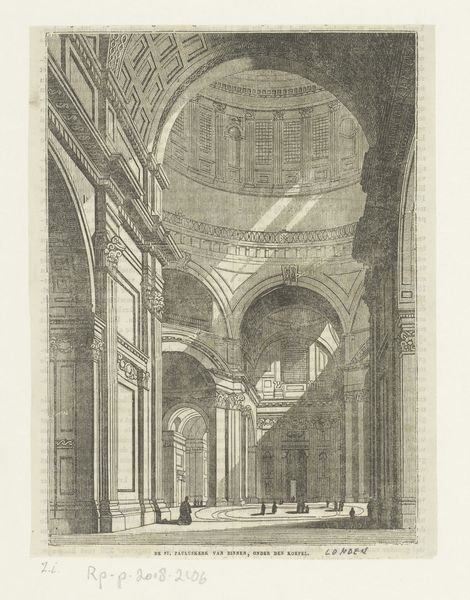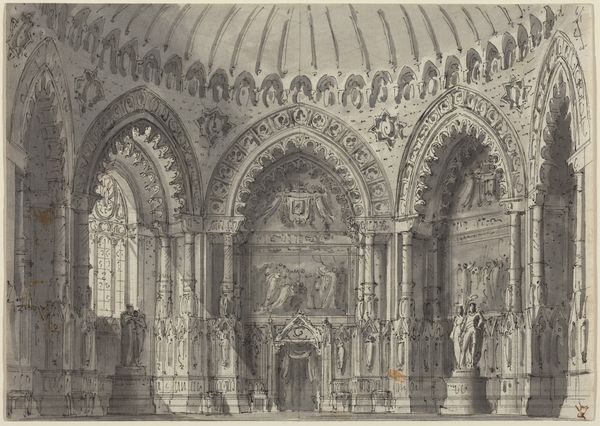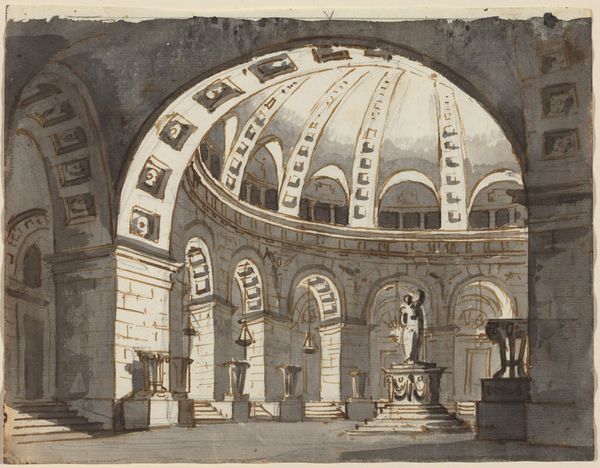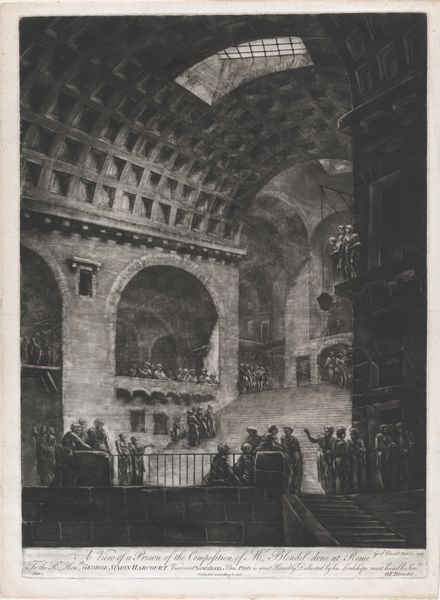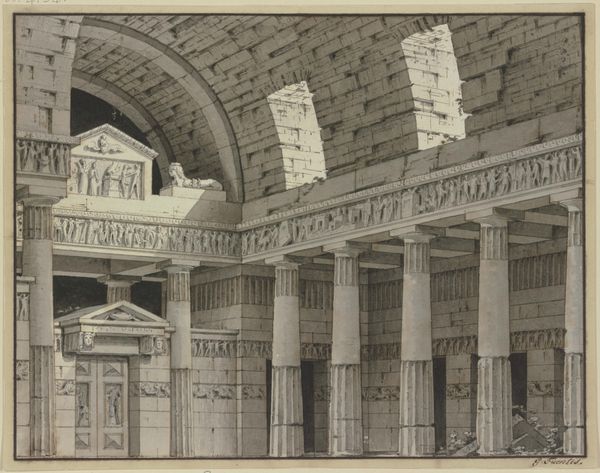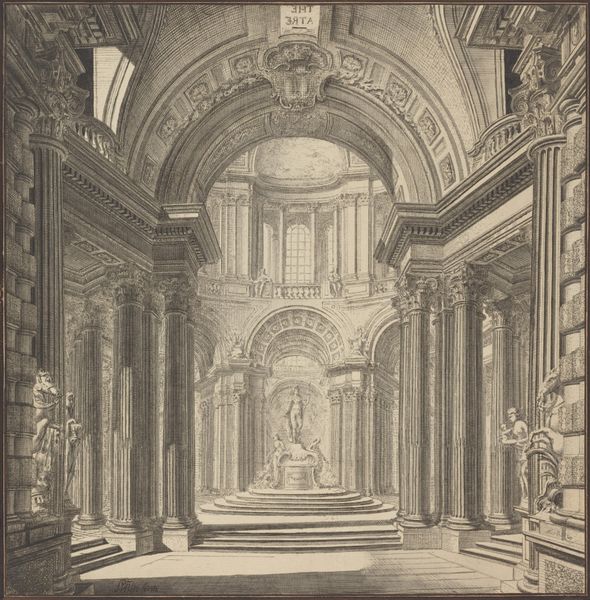
Architectural fantasy of the interior of an ancient building with partially ruined vaults 1777
0:00
0:00
drawing
#
architectural sketch
#
drawing
#
aged paper
#
toned paper
#
sketch book
#
unrealistic statue
#
old-timey
#
heavy shading shadow
#
19th century
#
paper medium
#
historical font
Dimensions: 421 mm (height) x 572 mm (width) (bladmaal)
Editor: This drawing, "Architectural fantasy of the interior of an ancient building with partially ruined vaults," created by Robert Adam in 1777, just stuns me with its scale! The way he uses the arches, the eye just keeps going deeper into the structure. What is your take on it? Curator: It’s a compelling window into the 18th-century fascination with classical antiquity and its intersection with contemporary power. Consider the architectural "fantasy" itself – it wasn't simply about replicating Roman grandeur. It's Adam’s vision of how such grandeur could and perhaps *should* be incorporated into the political and social structures of his time. What does the depiction of the ruin suggest to you? Editor: Maybe the suggestion is that even the greatest empires decline. But also that the grandeur of the past can be repurposed or integrated into contemporary society. Curator: Precisely! The ruin isn’t just a visual element; it's a symbol of historical weight and a challenge. Adam is suggesting that contemporary society should acknowledge and learn from this past. The very act of drawing, of documentation and reimagining, is an assertion of cultural power. This is where the 'fantasy' enters; it’s not about faithful reconstruction but rather creative appropriation, designed for specific political ends in Georgian Britain. Editor: That makes perfect sense! So the fantasy aspect isn't about escaping reality, but rather re-shaping it? Curator: Exactly. How can classical forms serve contemporary agendas? Consider how these architectural fantasies were displayed - were they purely artistic pursuits or were they meant to shape public opinion on architecture and Britain's place in the world? Editor: I hadn’t thought about it in terms of cultural and political power, but it’s amazing how a drawing can tell such a complex story! Curator: It makes you think differently about the role of architecture, and of art in general, doesn’t it? Always more to explore.
Comments
No comments
Be the first to comment and join the conversation on the ultimate creative platform.
